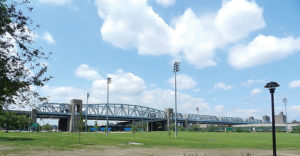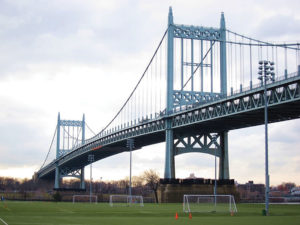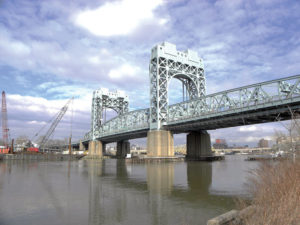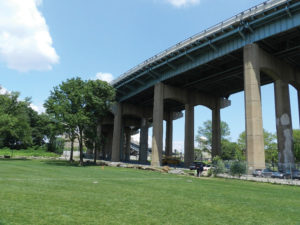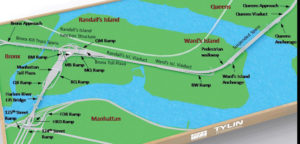Seismic Evaluation and Retrofit Design
Othmar Ammann’s Robert F. Kennedy Bridge (formerly the Triborough Bridge) is a complex of nearly two dozen bridge structures and approach viaducts and ramps, including the Harlem River Lift, the Bronx Kills Truss, and a suspended span over the East River (Figures 1, 2, 3 and 4). The historic bridge complex, one of the largest in the United States, connects the New York boroughs of Manhattan, Queens, and the Bronx, and carries 200,000 vehicles per day. As part of MTA Bridges and Tunnels capital program to ensure the safety of the bridge during earthquakes and strong winds, Thornton Tomasetti Weidlinger Transportation, in a joint venture with T.Y. Lin International, performed seismic and wind evaluations of these structures. This article discusses the seismic evaluation and conceptual retrofit.
During the past 70+ years, the bridge has been reconstructed many times, significantly altering the bridge complex (Figure 5). Starting in the early 1990s, Triborough Bridge and Tunnel Authority (TBTA) initiated a long-term $1 billion program to rehabilitate the bridge. The majority of these contracts were deck and bearing replacement. A thorough understanding of the history, geology and structural details of the bridge was vital for proper finite element modeling and analysis of the superstructure and foundations. The project team conducted extensive research to obtain all relevant drawings of the original construction of the bridge and subsequent modifications.
Design Criteria
New York City’s bridges are categorized as either “Critical”, “Essential”, or “Other” based on a bridge’s importance and seismic performance objectives. Because the RFK Bridge is a vital link between the New York City boroughs of Queens, Manhattan, and the Bronx, it is categorized as Critical. In accordance with the 2014 New York City DOT Seismic Criteria Design Guidelines, the RFK Bridge must be analyzed and designed for two earthquake levels (Figures 6 and 7).
Performance Criteria
As part of the project scope, the team was required to develop project-specific performance criteria for the seismic analysis. The criteria defined the allowable damage for every element of the bridge such as bearings, piers, and foundations for both earthquake levels. These damage levels were expressed as demand/capacity ratios.
It was crucial to develop a set of project-specific design criteria that was consistent with the performance-based design approach to ensure the vulnerability evaluation and retrofit recommendations were rational. Due to the lack of comprehensive guidelines for developing such design criteria for bridges, the engineers most often assume the responsibility for recommending these design criteria based on research and their experience. Thornton Tomasetti Weidlinger used its experience with seismic investigation projects on the Manhattan Bridge and Verrazano Bridge Approaches.
The following standards and specifications were used as reference:
- AASHTO Guide Specifications for LRFD Seismic Bridge Design, 2011
- AASHTO Guide Specifications for Seismic Isolation Design, 2010
- FHWA Seismic Retrofitting Manual for Highway Structures: Part 1 – Bridges
- FHWA Seismic Retrofitting Guidelines for Complex Steel Truss Highway Bridges, 2006
Geotechnical Investigation
At the start of the project, geotechnical information from the original construction soil borings was gathered. Also, a geotechnical investigation was completed including test borings, seismic cross-hole testing, and cone penetration testing. In-situ and laboratory testing such as water content, Atterberg Limits, grain size distribution, specific gravity, tri-axial shear, consolidation test and rock unconfined compression tests were also performed on representative soil and rock samples. Subsurface cross sections were developed, as well as soil parameters for each stratum. These tests were essential to obtaining the dynamic soil properties which were necessary for the site response analysis and soil structure interaction analysis, where the finite element model inputs are defined, and foundation stiffness matrices are developed.
Vibration Measurement
A field vibration monitoring of the suspended spans, Harlem River Lift Span and Bronx Kills Truss was conducted to collect field measurements. Tri-axial accelerometers were deployed at different locations on the bridge to measure vibration responses in the longitudinal, transverse and vertical directions. They were mounted along the truss chords, cables, and towers (Figures 8 and 9). Measurements were used to identify the dynamic characteristics of the bridge including natural frequencies of vibration and associated mode shapes and damping ratios. These measurements were then used to help calibrate the finite element models of the bridge to reflect the actual behavior better.
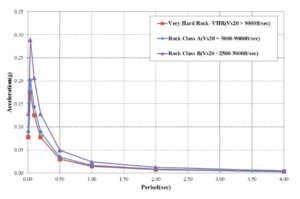
Figure 6. Rock-horizontal design spectra for New York Downstate Zone 1000-year return period. Courtesy of New York State Department of Transportation.
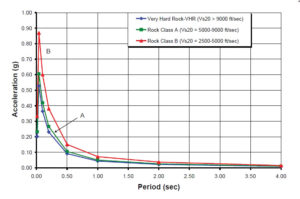
Figure 7. Rock-horizontal design spectra for New York Downstate Zone 2500-year return period. Courtesy of New York State Department of Transportation.
Modeling
Seismic evaluation of large bridge complexes with a large number of components, like the RFK, is rare. Due to the large size of this bridge and its various structures, it was not feasible to analyze it as a single model. The bridge was divided into several parts and individually modeled for analysis. The interaction between adjacent structures was captured by repeating the first two spans of each adjacent structure in the individual models as a boundary condition. This ensured that the stiffness and mass effects of adjacent structures were captured in the overall global behavior.
Most of the structures comprising the RFK Bridge should be considered “complex” structures based on irregular configuration or span length, or high curvature. Structures such as the steel girder bridges or ramps required multi-mode response spectrum analysis and were analyzed using CSI Bridge and SAP2000. However, many of the bridge structures, such as the suspended spans, truss spans, and lift span exhibit highly nonlinear behavior during earthquakes due to the existence of nonlinear elements, such as isolation bearings and cables, and required multiple support time history analysis of seismic effects. These spans were analyzed using the ANSYS and ADINA software programs.
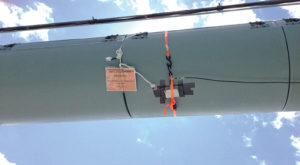
Figure 8. Tri-axial accelerometers attached to the bridge. Courtesy of Thornton Tomasetti Weidlinger.
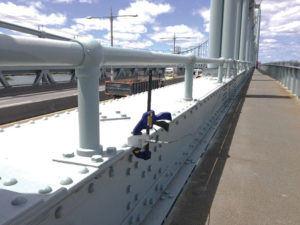
Figure 9. Tri-axial accelerometers attached to the bridge. Courtesy of Thornton Tomasetti Weidlinger.
Vulnerability and Conceptual Retrofit Design
Evaluation of the vulnerability of the bridge was performance-based, with the objective of identifying the damage that will occur during both the Lower- and Upper-Level Events. Based on the performance criteria, all structural members in the bridge were checked for potential seismic vulnerabilities. Cost effective conceptual retrofit was then recommended to mitigate those vulnerabilities.
Suspended Span and Anchorages
Overall, the suspended span performed well for both Lower and Upper earthquake events and evaluation revealed minor allowable yielding to secondary members such as laterals.
Seismic vulnerability in the anchorages was found primarily in the steel bent structure that supports the deck. Since the Queens Anchorage was rehabilitated in a previous contract, it was concluded that there was less seismic vulnerability than the Ward’s Island Anchorage. Yielding above the acceptable criteria was found in steel columns and secondary members such as diagonals and struts. Retrofit schemes for these elements include strengthening of columns, replacement or strengthening of diagonal bracing, and replacing vulnerable rivet connections with high strength bolts.
Some anchor bolts of elastomeric bearings in anchorages were found to be vulnerable to concrete breakout from the pedestal in the transverse direction of the bridge, due to inadequate concrete cover. A recommended retrofit was to add a concrete overlay to be dowelled to the existing pedestal to provide more confinement and edge distance for the anchor bolts.
It was recommended that vulnerable fixed steel column connections in the Queens and Ward’s Anchorage be replaced with new guided elastomeric bearings. Proper installation of elastomeric bearings will reduce the amount of inertial force transmitted to the base connection.
Harlem River Lift Span
Vulnerabilities in the Harlem River Lift Bridge were primarily found in the existing steel structure and bearings.
It was recommended that some of the tower diagonals, counterweight guides, diaphragms, and rails be strengthened with steel plates or replaced. It was also recommended that existing riveted connections be replaced with high strength bolts. Some of the elastomeric bearings on the tower span were found to be vulnerable to lateral capacity and required replacement with higher strength bearings.
Bronx Kills Truss
On the Bronx Kills Truss, a few of the pedestals supporting the bearings that carry the truss spans were overloaded, either in shear or bending. The pedestals may be effectively strengthened by the addition of a layer of reinforced concrete, doweled into the existing pedestal and to the pier cap below.
Some of the disc bearings on this bridge were found to be overloaded laterally. Replacement with similar bearings was recommended, having the same vertical capacity but larger lateral capacity.
The expansion joint between the Bronx Kills Truss and the adjacent concrete Junction Structure has insufficient displacement capacity for the FEE earthquake. The existing joint consists of a strip seal anchored to armor angles. It was recommended that this joint be either replaced with a wider joint with greater displacement capacity or to install seismic restrainers to reduce the demands on the joint.
Concrete Viaduct and Ramp Structures
The approach viaducts and ramps on this bridge consist of a steel girder/stringer superstructure supported on reinforced concrete piers on spread footings or pile supported foundations.
Most of the concrete elements were detailed before modern seismic requirements and were found to have inadequate development lengths and confinement at joint locations. Some vulnerabilities in the concrete structure include vulnerable cap beams and columns at the footing interface. It was recommended that these locations be strengthened with concrete jackets with reinforcement doweled into the existing structure.
For the superstructure, it was found that some bearings should be replaced since they are old NYSDOT standard elastomeric bearing details. Other elastomeric bearings can be retrofitted with the addition of transverse restrainers and longitudinal dampers.
A few locations had vulnerable concrete footings and pile caps. These locations can be strengthened with a concrete overlay and doweled shear reinforcement. At locations with vulnerable piles, pile caps should be extended, and new piles added. On the Queens approach structure, the number of foundation vulnerabilities would be reduced with the addition of transverse and longitudinal bracing in between pier columns.
Some expansion joints were found to be vulnerable. It was recommended that they be replaced to accommodate larger superstructure displacements.
Conclusions
A comprehensive study of the entire Robert F. Kennedy bridge complex was performed to determine if the bridge meets current seismic criteria and standards. The study also ensured that the bridge responds to a seismic event in a predictable manner, to protect the safety of the public, and to identify the vulnerabilities to be retrofitted to prolong the lifespan of this bridge in a practical manner.
This study serves as a prototype for seismic assessment of other older bridge complexes like the RFK that consist of various structures and bridge types.▪
Project Team
Owner: MTA Bridges and Tunnels – TBTA
Joint Venture: Thornton Tomasetti – Weidlinger Transportation Practice, T.Y. Lin International
Geotechnical Engineers: Mueser Rutledge

